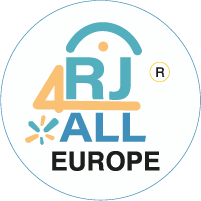
Each year, November 25th marks the International Day for the Elimination of Violence Against Women, a crucial occasion to reflect on the pervasive issue of gender-based violence (GBV) and violence against women (VAW). As we reflect on the commemoration that took place last week, it is clear that the significance of this day goes far beyond its annual observance. Living in a Europe marked by the Gisèle Pelicot case and rising numbers of GBV and VAW across the continent, the importance of this day seems more critical than ever.[1] Despite the EU’s efforts to push States to penalise VAW, such as through the Council of Europe Convention on Combating and Preventing Violence Against Women and Domestic Violence also known as the Istanbul Convention, the numbers remain alarmingly high and reporting rates dishearteningly low, with approximatively one in eight women in the EU having experienced physical or sexual violence.
While EU- and nation-specific legal and policy frameworks aim to address the aftermath of GBV and VAW, the EU-wide statistics reveal the urgent need to invest in prevention, so as to not leave the root causes behind VAW unaddressed. Particularly by looking into the societal norms in which VAW is rooted and perpetuated, the importance of preventative measures becomes increasingly evident. Restorative justice, with its focus on repairing broken societal relationships, offers a promising lens through which to address this.
Persistent Challenges in Combatting VAW in Europe
Despite significant EU efforts, such as the Istanbul Convention, which sets comprehensive standards to prevent GBV, protect victims, and prosecute perpetrators, the numbers of GBV and VAW cases remain alarmingly high across Europe and implementation gaps persist.[2]approximately 31% of women in the EU have experienced physical or sexual violence since the age of 15, and at least two women are killed every day by an intimate partner or family member.[3]Additionally, merely one in eight women reports incidents of violence[4]including insufficient victim support, inadequate reporting mechanisms and, perhaps, most importantly, persistent societal and cultural attitudes, which have created an environment where women do not feel safe to report instances of violence against them.
While legal and policy tools focus on addressing violence after it has occurred, little attention is paid to the cultural and social factors that perpetuate GBV and VAW. This disconnect highlights the failure to address the root causes of violence, making it evident that a purely legalistic approach is insufficient. This is where prevention becomes vital in working towards making a lasting impact and reducing VAW rates across Europe.
The Role of Socialization in GBV / VAW
Socialisation and cultural norms play a fundamental role in shaping the behaviours and attitudes that drive VAW.[5]Socialisation is understood as the process through which individuals internalise the behaviours, attitudes and values deemed acceptable by their society. This process not only reflects but also reinforces the specific standards and expectations considered “appropriate” within a particular cultural, historical and social context. These societal norms are dynamic and vary across time and place, shaping how individuals understand their roles, responsibilities and relationships within a given social context.[6] From early childhood, children absorb societal expectations and norms taught to them, including attitudes towards gender and gender roles.
In the case of patriarchal societies, masculinity is traditionally associated with dominance and control and a sense of natural power and privilege, including over women.[7] These perceptions are instilled and reinforced by agents of socialisation such as family, peers, education and media. While parents and education systems play a significant role in laying the groundwork of instilling ethical values and behaviours in children, in the case of gender attitudes, the importance of contemporary media cannot be downplayed in normalising violence against women.[8] This normalisation to VAW is not limited to individual attitudes but becomes embedded in cultural and societal frameworks, creating a vicious cycle that perpetuates and normalises violent attitudes towards women.
Restorative Justice as a Tool for Prevention
While traditional responses to VAW tend to focus on addressing harm after it has occurred, restorative justice can offer valuable insights into approaching the root causes thereof. Restorative justice is more than a set of practices, but an ethos aimed at understanding and addressing harm within its broader social and cultural contexts.[9] When applied to GBV and VAW, RJ can shift the focus from punitive justice to prevention by targeting the aforementioned broken social relationships and harmful perceptions underlying VAW. RJ can interpret VAW not solely as a legal violation but as a form of harm that disrupts the social fabric of relationships and communities. This approach emphasises how societal norms and attitudes toward women can contribute to the perpetuation of violence, highlighting the need to restore these fractured connections by challenging harmful attitudes toward gender.
By addressing these dynamics, RJ creates opportunities for resocialisation, as changing perceptions surrounding masculinity and gender roles is key to preventing VAW.[10] In this case, resocialisation involves challenging cultural systems that link masculinity to control and dominance (over women) and replacing them with positive models of gender relations, thereby restoring the broken societal bond, that posits men as more powerful than women. As “changing perceptions cannot be legislated”[11], this requires deliberate interventions and open dialogue at personal and community levels, which RJ can offer.
Integrating restorative justice efforts to combat VAW provides a tangible and practical approach to address the root causes of violence. RJ mechanisms can serve as a powerful tool for “re-socialising” individuals, particularly men and boys, by challenging and reshaping how they view and interact with women. Resocialisation involves undoing the harmful socialisation processes that reinforce patriarchal norms and attitudes, which often associate masculinity with dominance, control, and entitlement over women. By creating spaces for open dialogue and reflection, RJ enables individuals to critically examine these ingrained perceptions and replace them with values rooted in equality, mutual respect, and non-violence. This process not only addresses the attitudes of individuals but also targets the broader cultural frameworks that perpetuate VAW, fostering shifts in societal expectations and norms. RJ’s emphasis on repairing harm and restoring relationships extends beyond the immediate context of violence, offering a pathway to rebuild the broken ties between communities and societies that perpetuate VAW. By focusing on resocialisation, RJ provides a concrete method for establishing new cultural norms, thereby contributing to long-term prevention and changed social dynamics.
On this 25th November, as we reflect on the ongoing crisis of GBV and VAW, it is clear that this issue cannot be left unaddressed. It is time to extend our approach, adopting a holistic strategy that prioritises preventing VAW alongside addressing its aftermath. Restorative practices, which challenge harmful gender norms and promote equality, can help create safer societies for all women across Europe and beyond.
Author: Iliana Moridou, RJ4All Europe Intern.
Bibliography
Bell, K. (2008) ‘Intimate Partner Violence on Campus: A Test of Social Learning Theory’, unpublished dissertation, Indiana University of Pennsylvania.
Council of the European Union. (n.d.). Figures on gender-based violence. Retrieved from https://www.consilium.europa.eu/en/infographics/figures-gender-based-violence/
Council of Europe. (2011). Council of Europe Convention on Preventing and Combating Violence Against Women and Domestic Violence (Istanbul Convention).
European Union Agency for Fundamental Rights (FRA). (2014). Violence against women: An EU-wide survey.
Eurostat. (2024). Every third woman in the EU experienced gender-based violence.
Gavrielides, T. (2007). Reconciling restorative justice with the law for violence against women in Europe. In The British Journal of Criminology.
Hamieh, C. S. and J. Usta.(2011). The effects of socialization on gender discrimination and violence. Oxfam. Retrieved from https://civilsociety-centre.org/sites/default/files/resources/effects_of_socialization_on_gender_discrimination_and_violence_kafa_0.pdf
Hughes, M. and C.J. Kroehler (2002) Sociology: The Core 6th Edition, New York: McGraw-Hill. Retrieved 13 September 2010.
Isike, C. (2023). The value of re-socializing boys and men for positive gender relations to curb gender-based violence and femicide in South Africa. In N. Lwambo, A. F. Olayode, & M. Tarusarira (Eds.), Men, Masculinities, and Intimate Partner Violence (pp. 269–281). Springer.
Sideridou, S. (2024, May 21). The rising potential of restorative justice in combating gender-based violence in Cyprus and Europe: Ten years of the Istanbul Convention. RJ4ALL Europe. Retrieved from https://www.rj4all.eu/2024/05/21/istanbul-10-years/
Ruxton, S. (2004) Gender Equality and Men: Learning from Practice, Oxford: Oxfam GB.
[1] Eurostat. “Every Third Woman in the EU Experienced Gender-Based Violence.” Eurostat News, 25 November 2024.https://ec.europa.eu/eurostat/web/products-eurostat-news/w/ddn-20241125-3
[2] Sophia Sideridou, “The Rising Potential of Restorative Justice in Combating Gender-Based Violence in Cyprus and Europe: Ten Years of the Istanbul Convention,” RJ4ALL Europe, May 21, 2024, https://www.rj4all.eu/2024/05/21/istanbul-10-years/
[3] Council of the European Union, “Figures on Gender-Based Violence,” https://www.consilium.europa.eu/en/infographics/figures-gender-based-violence/
[4] European Union Agency for Fundamental Rights (FRA), European Union Agency for Fundamental Rights Website, https://fra.europa.eu/en
[5] C. S. Hamieh and J. Usta, The Effects of Socialization on Gender Discrimination and Violence (Oxfam, 2011), p. 6.
[6] M. Hughes and C. J. Kroehler, Sociology: The Core, 6th ed. (New York: McGraw-Hill, 2002).
[7] S. Ruxton, Gender Equality and Men: Learning from Practice (Oxford: Oxfam GB, 2004).
[8] K. Bell, “Intimate Partner Violence on Campus: A Test of Social Learning Theory” (unpublished dissertation, Indiana University of Pennsylvania, 2008).
[9] T. Gavrielides, “Reconciling Restorative Justice with the Law for Violence Against Women in Europe,” The British Journal of Criminology(2007), p. 139.
[10] C. Isike, “The Value of Re-Socializing Boys and Men for Positive Gender Relations to Curb Gender-Based Violence and Femicide in South Africa,” in N. Lwambo, A. F. Olayode, & M. Tarusarira (eds.), Men, Masculinities, and Intimate Partner Violence (Springer, 2023), p. 274.
[11] Ibid.









